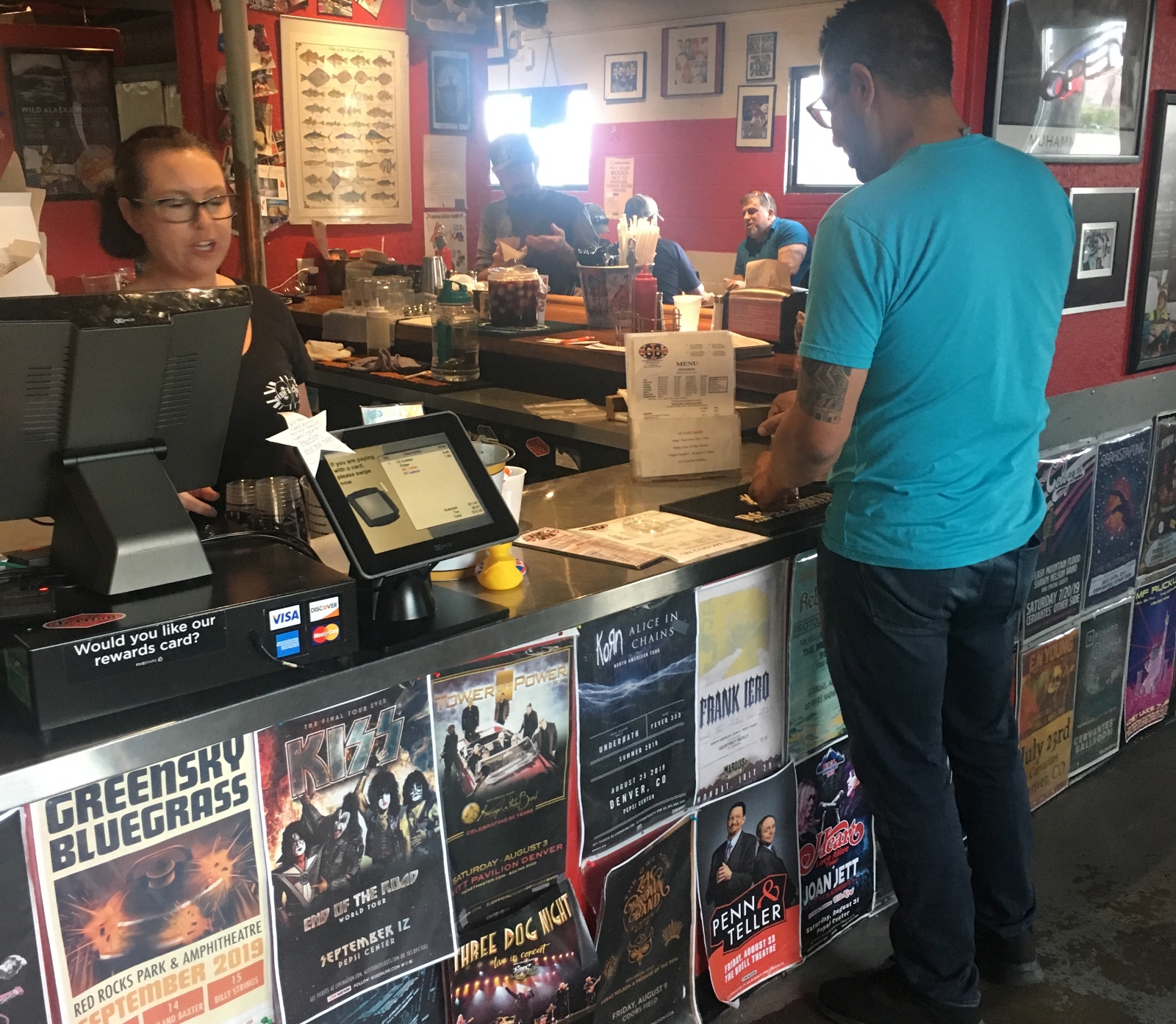News & Notes
Community as full partner in the inquiry
Image: One of the community sites in southwest Denver neighborhoods where Slover Linett co-conducted ethnographic fieldwork about how music fits into people’s lives. Credit: Tanya Treptow.
Kudos and gratitude to Kyle Bowen at Museums as Progress for making a point that deserves attention not just in the museum community but in the performing arts, libraries, public spaces, public media, science engagement, and other fields of culture and creativity. Don’t just “meet community needs,” he urges in this blog post. Work to help the community meet its goals:
I think speaking in terms of goals puts organizations more in a position of service or support. If I’m helping someone make progress toward a goal, there’s at least a suggestion that that person has alternatives — that I am just one of several ways they can achieve their goal. They don’t need me. Hypothesis: An organization is less likely to get high on its own supply if it thinks in terms of supporting goals rather than meeting needs.
We’ve been making a closely related point with our clients and partners, encouraging them to see their communities not just in terms of needs — the holes and gaps in the latticework — but in terms of assets: the connective structures of place, relationships, creativity, culture, history, and vision that that hold the lattice together. That very often make it strong, flexible, beautiful, unique.
Work with the community, not just for it, we counsel. Which entails not just meeting needs but building on, supporting, and strengthening those existing assets. And yes, helping the community get where it wants to go.
Which has big implications for how and why we do our research and evaluation work. Who decides to conduct a research study in the first place, and who determines what its goals will be? Who’s involved in developing the questions that will be asked? Of whom they’ll be asked, and by whom? Who helps interpret the answers we hear and the meanings we make? Who’s in the room when the findings are discussed, and who is meant to take action as a result of what has been learned? Most importantly, who benefits?
Not long ago, the response to all of those questions tended to be: the funder or cultural organization commissioning the study. Today, the answers almost always include, or even center, the community itself, as represented by leaders, artists, organizers, and residents from across the local ecosystem. Increasingly, the idea is that research should be co-conceived, co-conducted, and co-interpreted by the commissioning entity and the community it is meant to support.
That idea goes by many names at the moment, including overlapping but distinct terms like community-based participatory research, equitable evaluation, and culturally responsive research and evaluation. And it’s where we’re trying to move our practice every day.
How? By, at a minimum, building in time and budget to confer early and often with and listen to community leaders from both arts and non-arts contexts — and to pay them respectfully for their time and expertise. By inviting our clients and funders to think with us about power dynamics and the distribution of agency, reward, and potential harm in the research process. By partnering with researchers who come from and/or work in the community at hand, and defining “researcher” broadly and inclusively. By working in multiple languages where appropriate, and incorporating not just exploratory qualitative methods but also generative, co-creative approaches, to help reveal and leverage the creativity and vision of the community.
And by learning from our colleagues and friends around the field about what works and what doesn’t at the evolving intersection of research, equity, and culture.
As I’ve heard from many colleagues, we’re all facing the challenge that, while many funders and arts and culture organizations embrace the spirit of community-based, collaborative research and evaluation, some haven’t yet adjusted their timeline and cost expectations accordingly. It’s faster and cheaper to conduct research the old way: top down, unilaterally, “us” asking the questions of “them,” which just reinforces the hierarchies, assumptions, extractions, and harms endemic to both the arts and culture sector and social-science research in the past.
Much harder, messier, and more unpredictable is to work in ways that place the commissioning institution, the research team, and the community (in all its complexity) into a flatter, more distributed relationship, where real partnership can emerge — and where that partnership can generate new knowledge and guide collective action.
I’ve been wondering whether we need to stop thinking about the longer timelines and bigger budgets of that work as research expenses per se, and start thinking of them as part of the cultural organization’s or funder’s investment in the community — elements of the program itself. Done well, that kind of shared inquiry can benefit the community as much or more than the cultural enterprise that paid for it. In other words, it can help them toward their goals.
Yes, the commissioning entity’s own questions — your questions — will still be answered. It’s just that, in the equitable, community-embedded approach to research, those questions will have deepened and shifted as we work, to the wonderful point where they’re no longer just yours.

